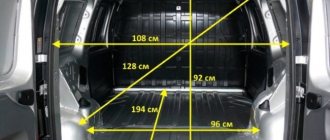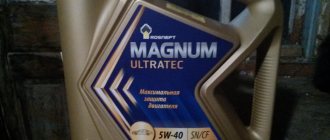Every car owner has probably at least once in his life encountered a situation where, in the cold seasons, the car refuses to start, even if the vehicle is in perfect working order and the downtime was short-lived. The reasons for this precedent may be a weak battery charge or a rapid cooling of the engine at low temperatures outside.
If the first problem can be eliminated by simply replacing the battery with a more reliable and capacitive element, then not every motorist knows how to deal with the second problem. Recently, they have actively begun to combat this problem by specifically insulating the engine using car blankets, which are presented in a decent assortment on the auto products market. In this article we will tell you what a car blanket for an engine is, the relevance of its operation in winter and the negative aspects of using an insulating element, and also consider the technology for manufacturing thermal protection for an engine, the nuances of choosing products in this category for your vehicle.
The need for a car blanket and features of its operation
To understand what role a car blanket plays for an engine in winter, you don’t have to be a professional mechanic; it’s enough to know the “basics” of how the unit functions. In severe frosts, the engine manages to cool down to a critical temperature within a few hours, and at the same time the car oil cools down, which entails an increase in its thickness. As a result of these processes, from a technological point of view, the procedure for starting the power unit is aggravated, which provokes its operation under significant load.
A car blanket is a special insulation for the engine, which allows you to extend the cooling period of the unit. Manufacturers divide car blankets into two basic categories:
- Stationary, which are mounted on the inside of the hood and are not removed during the cold season.
- Removable - they are a blanket that covers the engine compartment after stopping the car. Its operation is less convenient, since it is required to remove it from the engine compartment every time you start the car to avoid damage to the rotating parts.
Among the strengths of this product, experts highlight the following points:
- A car blanket allows you to extend the cooling of the engine compartment for several hours, while the period for which the manufacturer guarantees prolonged cooling depends on the manufacturing technology and materials used in production.
- The result of insulation is a reduction in the warm-up time of the car, which is reflected in the consumption of fuel resources towards savings.
- The insulation reduces the number of “cold” engine starts during the day, which is reflected in the loads; subsequently, operation without significant loads allows you to protect the unit from rapid wear and, accordingly, extend its service life.
Some skeptics argue that in severe frost, not a single blanket can protect the engine compartment from cooling, even when the car is parked for approximately an eight-hour working day, and it is pointless to talk about longer downtimes. A high-quality blanket, although it will not protect the metal components of the engine from cooling for such a long period, will, however, guarantee a longer cooling period for the oil, which will have a positive effect on starting the car.
Auto blanket manufacturing technology
A car blanket is an accessory that is installed under the hood of a car and “works” in critical and dangerous conditions, with high temperatures and in close proximity to rotating parts, therefore, when producing it, manufacturers must adhere to certain requirements:
- Use only heat-resistant and fire-resistant materials in the production of goods. The operating temperature of the motor is more than one hundred degrees Celsius, which is a fire hazard if low-quality materials are used.
- The thermal conductivity of the materials that make up the blanket should be minimal, which will ensure a longer period of heat retention in the engine compartment.
- Resistance to aggressive automotive fluids.
- It is strictly forbidden to use electrically conductive materials to avoid short circuits.
- Use of environmentally friendly substances. Under the influence of temperatures, unsafe components can enter the cabin through the air ducts and harm the health of the driver and passengers.
The materials that meet the requirements are fiberglass and mullite-silica fabric, which should act as the base substances for the manufacture of car blankets. These substances can withstand high temperatures and are used in the design of blast furnaces, which guarantees their heat resistance and safety.
Some car owners are wondering whether, after seasonal use, the blanket can be reused in the car, washed, in order to cleanse it of accumulations. Manufacturers recommend removing the blanket at the end of the season, strictly prohibiting washing it. Before storage, it can be cleaned using dry methods, without the use of water. Manufacturers often indicate the service life of the blanket on the packaging. In the off-season and summer, it must be stored in its original packaging or in any bag, in a warm and dry place - such precautions will preserve its performance properties for a long period.
Disadvantages of internal combustion engine insulation
A car blanket, as a product for protecting the engine, has both supporters and opponents of its use. Among the main disadvantages, car owners name:
- Clogging of the engine compartment with microparticles of fiberglass and other components of the blanket.
- There is a possibility of the blanket detaching, with the danger of it getting into the moving elements of the engine compartment with all the ensuing consequences.
- Possibility of ignition of insulation when the engine heats up too much.
All the described disadvantages from a practical point of view are significant, however, in most cases they are explained by the irrational choice of a car blanket of inappropriate quality from an inexpensive product category.
When choosing a blanket for a car engine, it is important to take a rational approach to studying its composition and technological features, and give preference to purchasing insulation exclusively in certified stores. The correct approach to product selection will allow you to avoid unpleasant precedents during its operation.
Homemade car blankets
Some car owners, in order to maximize savings, use cotton blankets as insulation or make car blankets with their own hands. Reviews about such accessories for engine insulation are negative - using them is not recommended at all, as this increases the risk of fire in the engine compartment.
Homemade insulation will also have to be installed before each engine start and removed after stopping it, which is not always convenient. Using cotton insulation that is not suitable in size can cause damage to drive belts and other elements of the engine compartment.
Specifics of car blanket selection and its pricing policy
The price of a car blanket for a vehicle engine depends on many nuances that the car owner must take into account when making a choice. As already noted, a low-quality product may not meet the buyer’s expectations in terms of functionality, cause serious trouble, and cause damage to property.
The most rational option would be to select according to quality characteristics: the properties are determined by the main material, which acts as insulation. Most car owners nowadays prefer blankets made from felt. This material significantly surpasses analog synthetic products in terms of heat resistance. Synthetic-based insulation is most often recommended for car owners who operate their car in moderate climatic conditions with small temperature changes and the absence of severe frosts.
The pricing policy for car blankets starts from one and a half thousand, and can reach four thousand rubles, and sometimes more. The cost is determined by the size of the blanket, the material used, the prestige and reliability of the manufacturer. The most popular products nowadays are accessories made on the basis of the so-called “basalt” fiber, which has excellent thermal insulation qualities, guaranteeing that the unit will maintain the temperature for about four hours in severe frosts, while the oil will maintain the temperature for up to ten hours. The price of such a blanket will vary from two to five thousand rubles.
When choosing insulation for your car, professionals and experienced car owners recommend purchasing products designed for a specific brand of car, if possible. Universal insulation also copes well with its task, however, it has a complicated installation, which provides for the possibility of errors during installation, which can cause unpredictable problem situations.
Nowadays, you can also find insulation products on sale that are equipped with electric heating elements. This option is suitable exclusively for those car owners who plan to leave the car in places where there is access to an electrical outlet. The natural thermal insulation of such products is at an extremely low level.
Accordingly, for car owners who live and operate their car in conditions where sudden temperature changes and critical sub-zero temperatures are rarely observed, it will be enough to buy a synthetic blanket, and for drivers who live in harsh climatic conditions it is better to purchase a more heat-resistant felt accessory.
There are different types of car blankets
In Astana, there were three main types of car blankets for retail sale.
Kazakhstani
Local products are presented in most supermarkets and car markets at a price of 5,500–7,000 tenge. Distinctive features are a plastic bag, into which something that could not be stuffed seemed to be shoved. The blanket itself is covered in a white shiny material and looks well made. The price of a blanket depended both on the place of sale and on its size.
Blankets of different sizes are designed for different cars - everyone's engine compartment is different. Before purchasing, it would be a good idea to measure with a tape measure.
Russian
This collective term came into our search after a survey of car owners in Astana who use blankets. They all bought Russian ones because, in comparison with Kazakh ones, they seemed (according to unclear estimates) better. The price of such blankets is higher on average by 500–1,000 tenge, while Russian products look like ours.
Thin
The third type of blankets was found at car markets; according to sellers, they were made in Russia and Belarus. Nevertheless, they looked the same and differed from the first two in their artisanal packaging and smaller thickness both to the touch and to the eye.
First we bought a Kazakh one, and then, on the recommendation of friends, we bought a Russian one. The latter was accompanied by instructions with a description and copies of certificates. This looked more convincing, and that’s what they put under the hood, although, I repeat, they were tactilely and visually similar.
What about the nightmare?
There is an alternative to a car blanket - you can buy a felt blanket for three or four thousand at any car market in Northern Kazakhstan. It is sold for exactly the same purpose - to insulate the engine.
Let's assume that natural insulation copes with its task to some extent. However, there is a small but. It is almost impossible to completely get rid of the smell of sheep from felt. It may not smell when it is cold, but when it warms up... But warm air from the engine compartment enters the air intakes of the cabin. In general, we didn’t even consider the felt, although we had it for comparison.
Store-bought car blanket or homemade: which is better?
A car blanket of decent quality falls into the category of expensive accessories, which is why car owners often try to save money on its purchase. Often, for this purpose, the driver uses his own options for insulating the power unit for the winter, which is much cheaper.
Making a car blanket with your own hands is really not difficult if you have the skills to technically interact with vehicles, however, such a solution has controversial benefits. A self-made blanket, even from non-flammable materials, such as felt, poses a threat: during operation, microparticles of motor oil, gasoline and other working fluids accumulate on the home-made accessory, which can cause ignition, which has the potential to develop into a fire with absolute destruction car or its partial damage.
If an extreme need arises, when there is no opportunity to buy a product that inspires confidence in the market or in a store, then experts advise making car blankets with your own hands using special technology and from reliable materials:
- Use fiberglass for the outer layer of the blanket, use basalt fabric or inorganic glass wool as a filler, and use aramid thread, which is fireproof, for stitching the product.
- Manufacturing begins with designing the product by creating a pattern. To do this, you need to carefully measure the parameters of the engine compartment and create a pattern from scrap materials.
- Initially, the three edges of the outer layer are sewn together, after which the padding is inserted inside and the last edge is stitched.
- To eliminate the possibility of the stuffing being knocked down as a result of vibration during operation of the machine, it is worth making several more quilted lines over the area of the blanket.
The thermal insulation properties of a homemade blanket, even with such a professional approach to its production, are significantly inferior to the properties of factory-made products, which makes purchasing the latter less profitable.
DIY car blanket
The car blanket should ideally fit the size of the engine compartment so that warmth can be retained under it for as long as possible. It is not always possible to find models of blankets for a specific car on sale, and in such situations it is better to make a car blanket with your own hands. Thanks to it, it will be possible not only to make the most efficient use of the heat from the engine compartment, but also to save a lot of money, since the cost of a car blanket is quite low.
How to determine the dimensions of a car blanket during manufacture
Making a car blanket is quite simple, but the work will go down the drain if you choose the wrong size accessories. You cannot sew “by eye”; you need to correctly measure the dimensions of the engine compartment. Please note that we are talking specifically about filling the entire space under the hood of the car with a blanket, and not just covering the engine.
Below is a diagram showing what dimensions you need to measure to make your own car blanket. Please note that the dimensions themselves are given as an example only, while they are individual for each car. Having decided on the size of the car blanket, you can move on to choosing materials for sewing it.
What materials to use to make your own car blanket
Since the car blanket is located directly under the hood, it has certain requirements in terms of safety and fire resistance. Following from this, as well as from other recommendations, we can conclude that the material for a car blanket should:
- Have a high melting and ignition temperature, which applies to the filler and duvet cover;
- It does not have the highest density, since it will have to be stitched at home;
- Do not let cold air in from outside and keep warm air in the engine compartment for as long as possible.
Based on the above, you can choose a lot of materials that are suitable for making a car blanket with your own hands. But the economic component of producing an accessory for the engine compartment should also be taken into account. The most optimal materials in terms of price/quality ratio for sewing a car blanket with your own hands can be called:
- Fiberglass. It will be used as a kind of duvet cover, that is, filler is placed inside it. Fiberglass fabric is good because it fits all parameters and is highly widespread. You can buy it for sewing a car blanket at any construction market. We recommend that you contact sellers who sell fireplaces and stoves for fiberglass fabric; they always have it in stock. The cost of fiberglass is 50-70 rubles per meter;
- Izover insulation, also known as mineral (basalt) wool. The material is often used to insulate houses - walls, roofs, entrance doors, window frames and other things. It is very common, and finding Izover on sale will not be a problem. The thickness of the insulation is 50 millimeters, and it is sold in standard rolls. Mineral wool has a serious drawback - it is very itchy, which means that all work on sewing a blanket for a car must be done with rubber gloves.
Also note that sewing will require a large needle and fire-resistant thread. You can use regular thread if it is treated with a special impregnation before or after work.
How to sew a car blanket
It’s worth noting right away that making blankets for the engine compartment of a car is a job for a man. The fiberglass fabric is very dense, and it will be difficult for a woman to pierce it with a needle. To sew a blanket, you do not need any special knowledge in the field of cutting and sewing; just follow the following instructions:
- First of all, measure the dimensions of the engine compartment, as we described above;
- Next, purchase the necessary materials in the required quantities. It is better to buy with a reserve so as not to have to go to the construction market again if there is not enough isover or fiberglass;
- After this, the actual sewing process begins. Be sure to wear rubber gloves and first sew an analogue of the duvet cover from fiberglass, leaving one side unsewn;
- Fill the insides of the created duvet cover with Isover and sew it on the last side.
Since the blanket will be hidden under the hood, there is no need to worry too much about its aesthetic component - it is much more important to securely sew all sides so that the Izover does not fall out onto the engine. To protect yourself from this once again, we recommend sewing the blanket not only along the edges, but also crosswise.
Once you have sewn a car blanket, you can use it for several winters in a row. It will more than pay for itself, saving the driver gas and time.
( 418 votes, average: 4.53 out of 5)
How to adjust windshield washer nozzles
How to identify a sunken car during inspection











